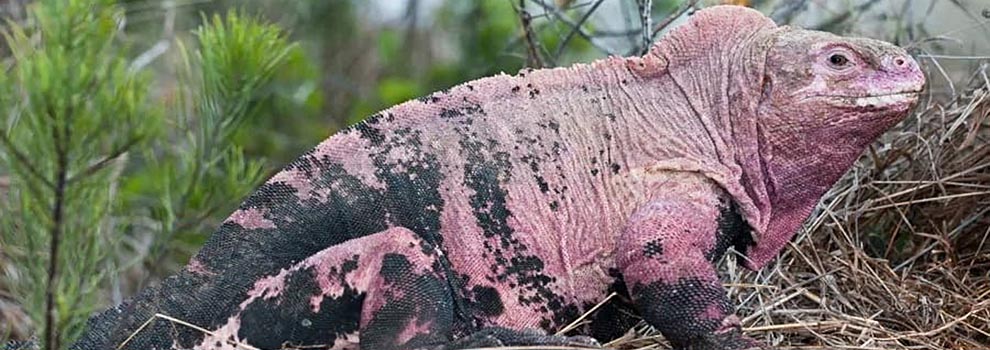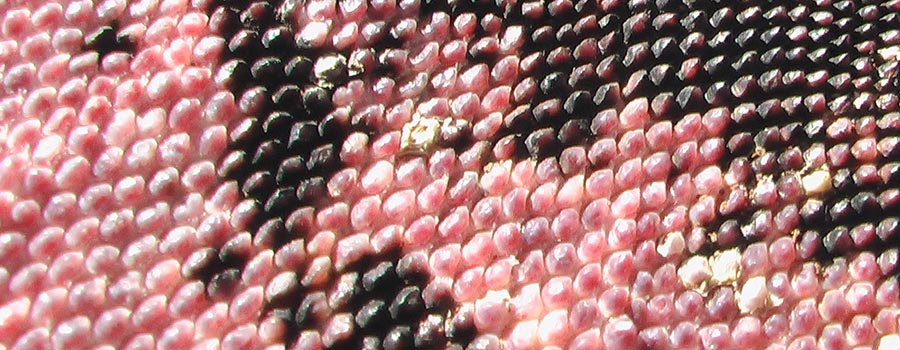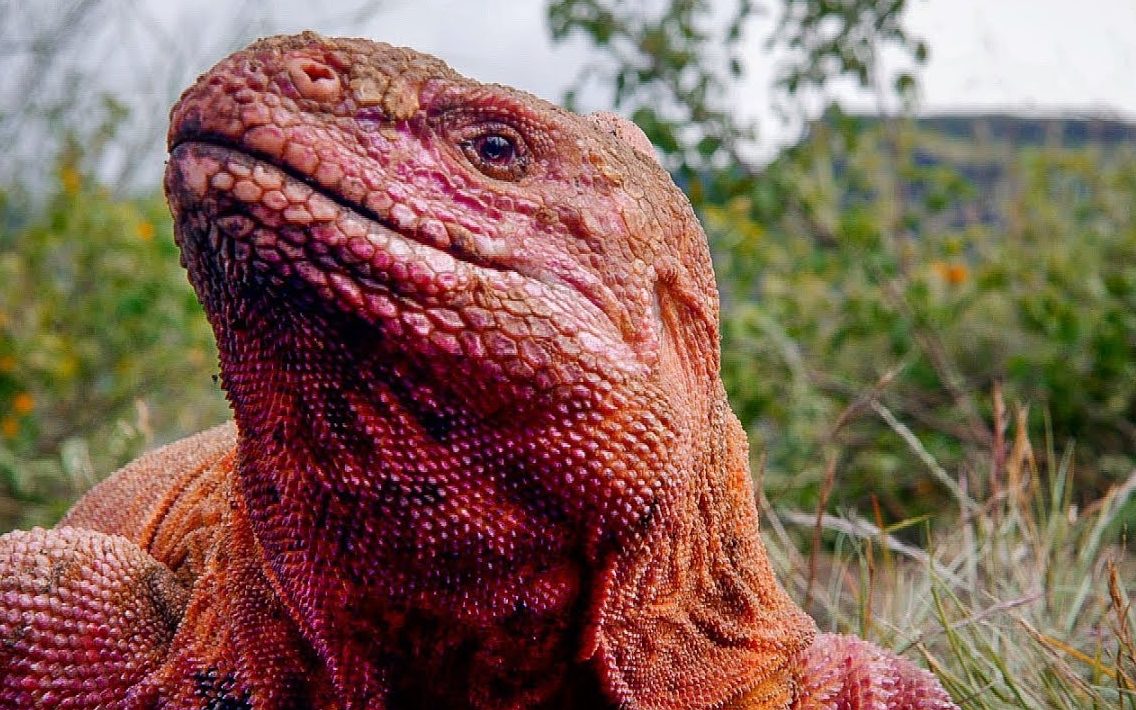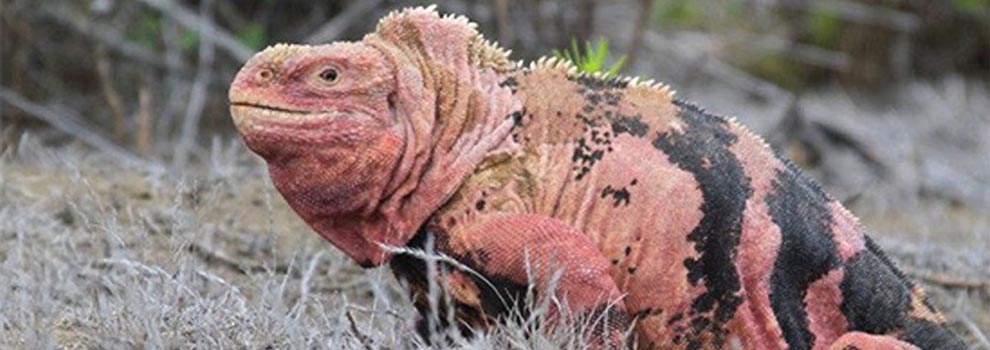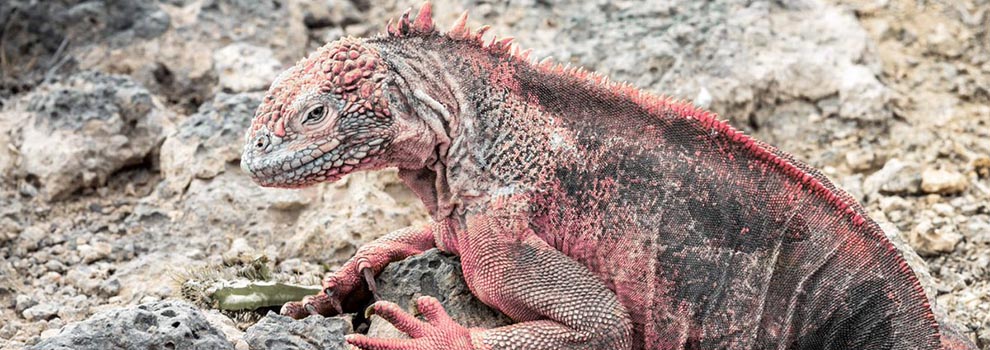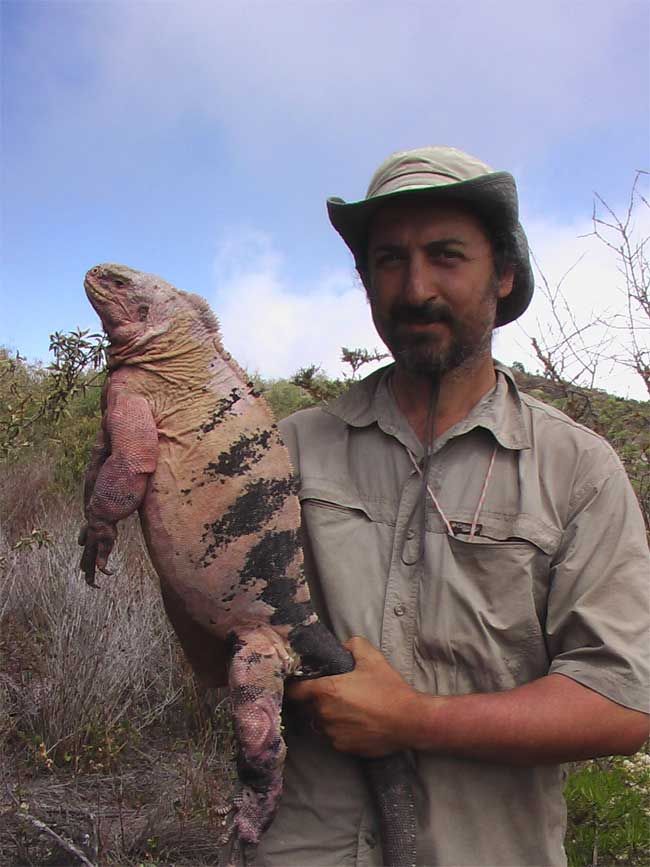Emergence of a new flagship species: the Pink Iguana
Despite being among the most ecologically-studied locations on the planet, the Galápagos Islands do not stop revealing novelties.
In 2009, the Pink Iguana was described and brought to general attention. The discovery of a new species of megafauna in one of the most intensely studied archipelagos in the world was truly astonishing. In fact, it was a boom.
As soon as we started investigating the species, in 2005, it was immediately clear that the pink iguana was not just “another new species”. Besides being so different in all respects from other iguanas, the pink iguana is extremely important as it opens a window on the evolution of Galápagos iguanids. The history of these iguanas is primarily one of extinctions and recolonizations, most of which left few traces in the fossil records and in the genes of remnant populations. In fact, the pink iguana is the only record of a separate ancient lineage that testifies to divergence events occurring within Galápagos land iguana since they originally split from the ancestor in common with the marine iguana. That happened millions of years ago.
For these reasons, Sir David Attenborough publicly commented on the species: “I used to collect stamps and this [pink iguana] was a Penny Black of the natural world in a very big way.”
Many questions still remain: why are they pink? What is the selective advantage of being pink? Where do these iguanas come from? Why do they only live on an island that is not older than approximately 500K years, while their ancestor existed million years ago?
The pink iguana is rare and it’s restricted distribution and low population density are alarming. Cats and black rats, introduced by humans, are known predators of reptilian eggs and young, and are numerous on Wolf Volcano. The volcano itself is a source of concern as it is a well active volcano. Last, illegal traffickers are also a problem and we have evidence of their interest in the species. So far, we have found no juveniles and little evidence of successful reproduction in this enigmatic species, which is currently listed in the IUCN Red List as “Critically Endangered” (http://www.iucnredlist.org/details/174472/0).
The pink iguana is increasingly the subject of artistic and societal interest, and has been the inspiration for several different initiatives. International mass-media (TV, radios, newspapers, magazines) regularly report on the pink iguana. It is now clear that the pink iguana plays a strategic role in the conservation of the Galápagos Islands and as a global conservation symbol: it is a flagship species. We will continue to investigate the pink iguana, to guarantee its future.

